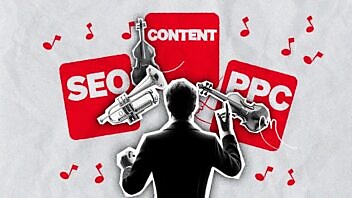This is one of a series of blogs about the changing B2B Go-To-Market landscape. You can check out the others in the series at the bottom of this piece.
I met Anthony Kennada the other day. He’s the founder and CEO of AudiencePlus which is a SaaS platform for owned media designed to enable marketing teams to take back control of their audience. Jon Miller mentioned Anthony’s company to me and Udi Ledergor from Gong is on his advisory board (I interviewed Udi recently too). The whole company is built on the premise that the old GTM playbook for B2B is broken. That’s what made me want to talk to him.
So Anthony, before we get into AudiencePlus, tell me what you did before and how it led you to this?
I’ve been in B2B SaaS pretty much my whole career and don’t really know anything different. I started at Box in sales and partnerships. Then I fell into the CMO role for around a decade for companies like Gainsight, Front and Hopin.
Gainsight was pre-Series A when I arrived and only had a handful of customers. I didn’t have a marketing track record, so I didn’t know instinctively what worked and what didn’t. I had to learn marketing from first principles. Naively I actually looked for inspiration among B2C firms like Airbnb and I studied what late night TV hosts — like James Corden’s Carpool Karaoke — were doing to build audiences creating serialized content around their segments to build brand.
What we learned took us to a different place than the old Aaron Ross model of predictable revenue that involved outbound, cold calling and a huge investment in paid search. Gainsight was pioneering customer success, though it wasn’t really an established category at the outset. If you’d searched for ‘customer success manager’ on LinkedIn at the time, there would have been fewer than 100 results and most of them worked at Salesforce.
The ad spend model just didn’t deliver in this context. So we found ourselves experimenting with content that wasn’t about us or our product, but was about this emerging discipline and the jobs of the people that worked in it. We hosted an event for these pioneers who were desperate to huddle together for warmth, to learn from their peers. We were the brand that helped bring them all together, that helped them define what the job was all about.
We got some powerful downstream equity from that. We learned that brand marketing — which is really what we were doing — was different from classical growth marketing. This approach built the company to $100m of ARR and, critically, 80% of the leads were directly sourced, not brought in the old GTM. We discovered not just how to build a reputation for thought leadership but to convert that thought leadership into pipeline.
Sounds like identifying the community and how to serve them was key?
Exactly. Communities have shared interests and they understand what those shared interests are even if they can’t quite articulate them at the outset. And communities are fundamentally human: they want to be entertained, to belong, to learn and get better at their jobs. They want to hang out in places where they can rub shoulders with people like them, including at live events which are equally if not more important than your product messages. We found we didn’t need to force our product down their throats (which they were allergic to anyway). Our job was to zoom out and provide content and places that helped them think through their most pressing challenges. They found our platform organically after that. We discovered this bound our best prospects to our brand emotionally and helped us form a relationship with them.
After a couple more CMO roles, I started to understand the underlying weaknesses of the paid media model, the fact that it didn’t help you build intimate relationships with a desired audience. Everyone knows that getting buyer attention is a bare-knuckle street fight where, as we say on our website, it means it’s you versus everything humanity has ever created. Ultimately, all paid media is incredibly inefficient and getting more so.
What was the jump from all that CMO experience to AudiencePlus?
AudiencePlus was formed from the sum of my experiences as a CMO. At Gainsight, we manually pulled all the data on those interactions together into a custom data lake to see what people were actually interested in: what formats are they consuming, how long were they spending, what did the content journeys look like. It was messy and not a smooth process at all. Getting the insights involved some very heavy lifting.
As a result, I thought a lot about how we could operationalize this experience. In my CMO roles I experimented with building a digital media platform as an extension of a website. We took the blog and supercharged it to make it more than written articles, adding video, podcasts, live events and streams, and live broadcasts. We made our archives available and more, including from previous conferences. And our marketing was aimed at getting people — the target audience — to subscribe to our content. That was the key CTA on our website — not a demo or meeting sign-up. We were aiming at the 95% of buyers who were not yet ready to buy, not just the 5% who were. We had different CTAs for those two groups, but the prime goal was to hold the attention of the 95% by helping them learn, get better at their jobs and the like. Conversion rates were off the scale: instead of the 2% you get at best with paid approaches, when we led with subscription we got well over 10%.
The content engagement statistics were interesting, but the real value lay in understanding the relationships we developed with a community of people that care about quality enough to subscribe to it.. It was similar to what’s happening in social media. People used to find people by subscribing via social platforms like Instagram, SubStack or others. But now they’re subscribing directly and even paying for access. And it was happening in B2B too. When Salesforce launched Salesforce+ it validated our thinking. Salesforce+ is a streaming service, inspired by Netflix, Disney+ and so on. Salesforce created a huge set of original resources and live events aimed at helping customers and prospects become industry experts. Salesforce+ convinced us that content used to build subscribing audiences was the next big wave.
So sorting out that data mess was the inspiration for AudiencePlus?
Yes, getting the data sorted is critical. We’ve been doing inbound marketing for 20 years and really it’s pretty amazing, a great strategy. But inbound marketing isn’t really optimized for video, streaming and podcasting and all the new stuff that’s emerging. Channels are constantly evolving and buyer attention is getting scarcer and scarcer. And sitting between us and our customers are social algorithms that we don’t control. And that means that every time I post I’m at the whim of the platform owner. The result is that people are spending more and more for third party data that’s confusing or wrong.
Together this is putting pressure on marketers to have a first party relationship with their audience to build relationships with subscribers and get them to enroll. As we move towards using AI in marketing, it’s increasingly obvious that it’s only as good as the data we feed the models.
Quality has been one of the biggest topics of debate during the last 20 years of content marketing. How good does content have to be today? Where does AudiencePlus come down on that argument?
It feels as if the content bar is rising and has to rise. The good news is that our platform tells you really clearly what’s working and what’s not, what people are consuming. We get a super-clear picture of audience engagement down to the individual level. But unless marketers step their game up significantly on content quality no one’s going to be in a position to win. The days of floating crap content out there and having an SDR call 10 minutes after someone downloads it feel like they’re disappearing. If our view of a subscription-centric audience-first world is correct, the only way people are going to subscribe to content is if it’s great. Look at Substack. Look at Patreon. The only way people build sustainable businesses is if their content is valuable over a long period. Exactly the same is becoming true in B2B tech. We have to create content good enough that people are falling over themselves to subscribe and come back again and again.
Personalization is important too. If you think about it, what marketers are tasked with in terms of creating and distributing content is frequently riddled by incomplete or wrong data. They’re often guessing about what someone’s interested in. If we create content for a typical B2B customer, brands often start with search intent data and then figure out what to write. The strategy is based on where we want to rank. In the worst case, the CEO or head of product dictates the focus based on the fact we have a product launch coming up and we’d like to insert ourselves into a prospect’s thinking.
That’s not a million miles from what, in the pre-digital days we used to call interruption marketing. Really we should be building our activity on the real problems our audience has. And the only way to figure that out is either to ask them via a survey or to look at accurate data on what they’re reading and have that shape the editorial calendar. How people discover and engage with the content is key, along with what type of content they like. Lots of people like to consume bite-sized content. They might download the 50-page eBook but they’re never going to read it. Others like to immerse themselves in long-form stuff. Some want to listen to a podcast while they’re on a run. You have to account for tastes across a pretty wide spectrum. Our platform really helps here. Data that helps to decide on production, format and distribution strategies is key.
It really feels that AudiencePlus is trying to take advantage of what may be a discontinuity in the market. People are fed up spending more and more on sugar rush leads to achieve not very much in pipeline terms.
It’s true that the enemy in our crosshairs is the MQL model. We think it’s hugely subjective, based on data weighting that by and large does not hold up to scrutiny. No one is ever sure whether the prospect is in the 5% or the 95%. The thinking about MQLs emerged in a pre-AI world. We’re in the early days of using AI and some newer foundational models to solve the problem of building relationships with a highly targeted audience.
How do you sell this new concept to a CMO cohort that only got a seat at the top table because of the data that proved the marketing was working?
Weaning people off their MQL addiction and into a different world is tough. Everyone’s so data centric now that our job is to prove our approach works. And we have the data — I mentioned the 10% conversion rate before and that 80% of the leads came direct. Marketing as a practice is going through an effectiveness crisis as many companies struggle to build robust pipelines. After years of spending a ton and saying to the board ‘here are the leading indicators of how our pipeline is developing, trust us’, I think CMOs are looking for a better way.
Ultimately I think our way will allow marketers to do more and better with less. We’re trying to unlock a ton of creativity by taking the operational burden off marketing teams. We started the company before ChatGPT, but even then the way we thought about it was the way Netflix built a recommendation engine around content or Tik Tok built the interest graph around their offer. We wanted to do the same for B2B companies. The architecture of the platform centers on a backend graph database where we can look at every dimension of the relationship.
So what’s next?
The first phase of the company was about convincing our customers that their audience really matters. And that the type of content you produce and the channels you use and when you use them really matters. That first party data eliminates the guesswork associated with third party data and makes your desired outcomes easier to achieve. The next phase for us is to explain a couple of key things:
- What you can do with all that first party data you’ve created now
- How you can use that data to inform production decisions, personalization priorities, distribution choices and ultimately how do you connect all that to revenue.
We’re launching a new website and new identity in the next few weeks with a deeper story around that. The good news is we’ve solved a lot of our product challenges and we have a killer customer list. The job now is sharper messaging. Some people still view us as a more media-friendly extension to their website. We’re much more and we have to demonstrate clearly the new data model we’re creating and how to unlock value.
We have to prove all that to the content marketing team, the likely principal users of the platform but who rarely own the budget. They report generally to demand gen and we have to convince them we’re the solution to their pipeline challenges. If you’re an enterprise you can build some of our functionality in WordPress or Sitecore or whatever, but what you’ll miss out on is the backend data. Web analytics data just won’t cut it.
Thanks Anthony. I’ll keep an eye open for the new story and look. I love where you’re taking AudiencePlus. Good luck.

Founder
Stan started out in university teaching before moving into military intelligence. By a circuitous route, he found himself heading up the UK’s biggest tech PR company (Brodeur) and flogging it to Omnicom.
Published in:
b2b-marketing
b2b-seo
digital-marketing

Enjoyed this article?
Take part in the discussion




















Comments
There are no comments yet for this post. Why not be the first?